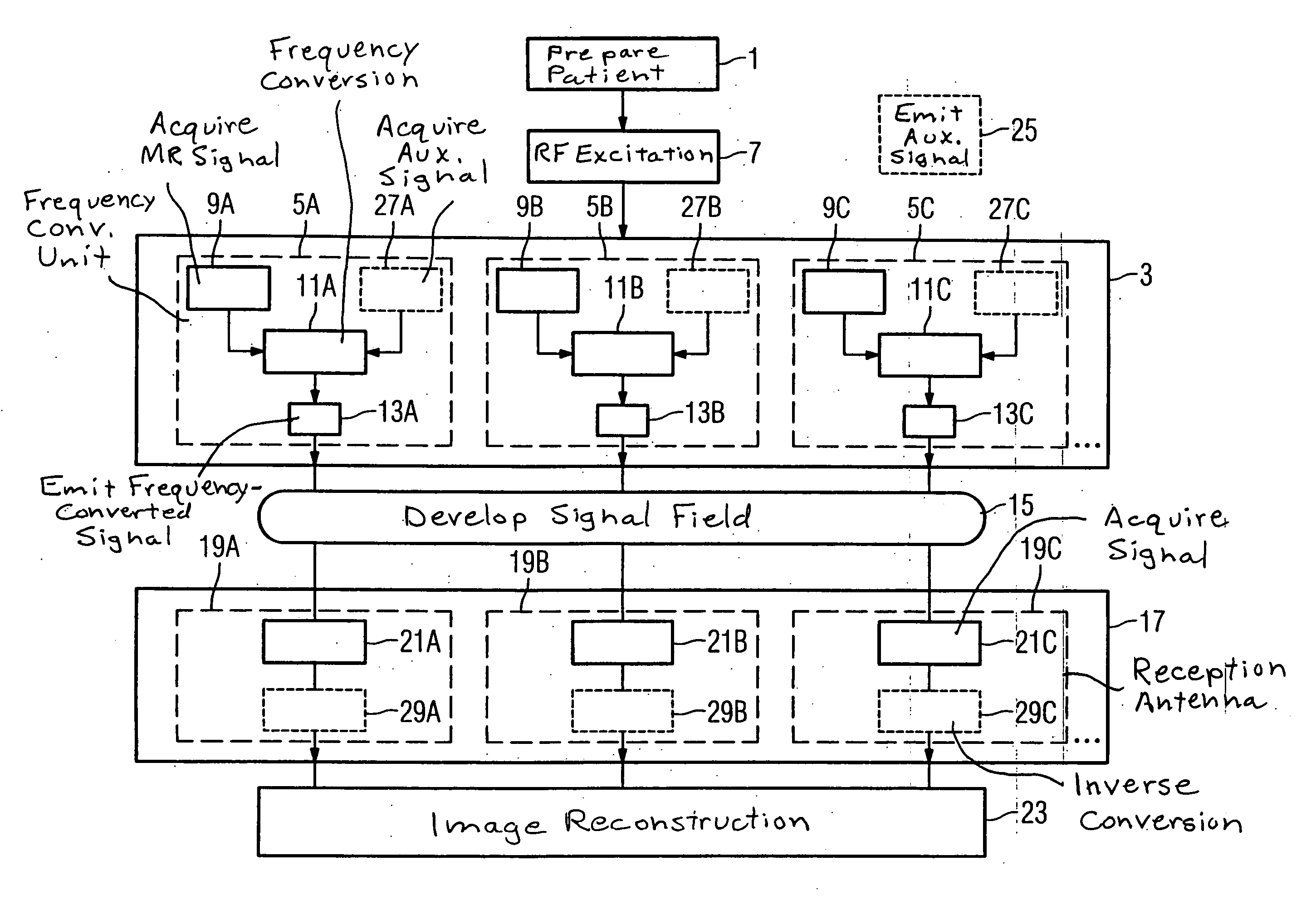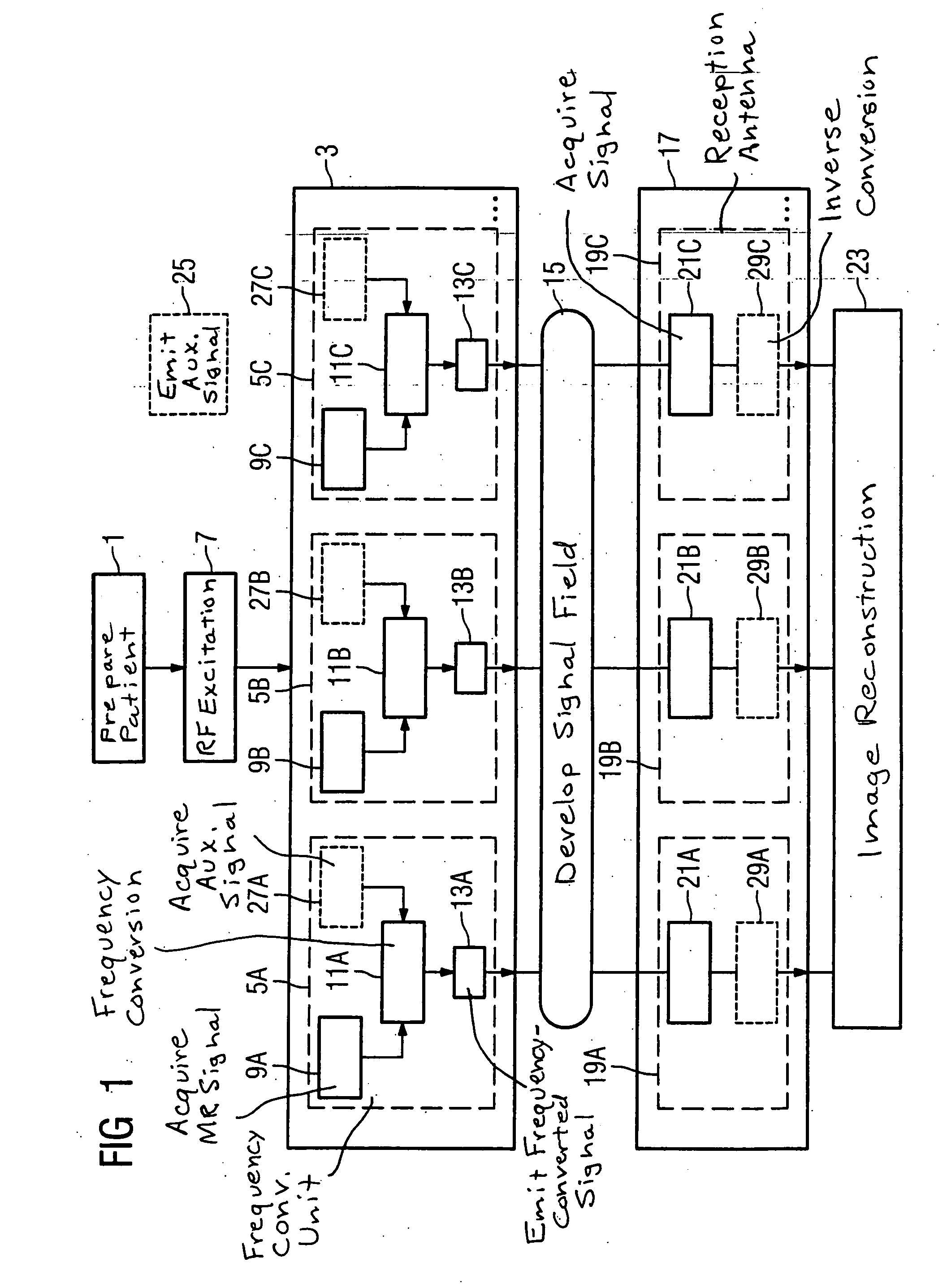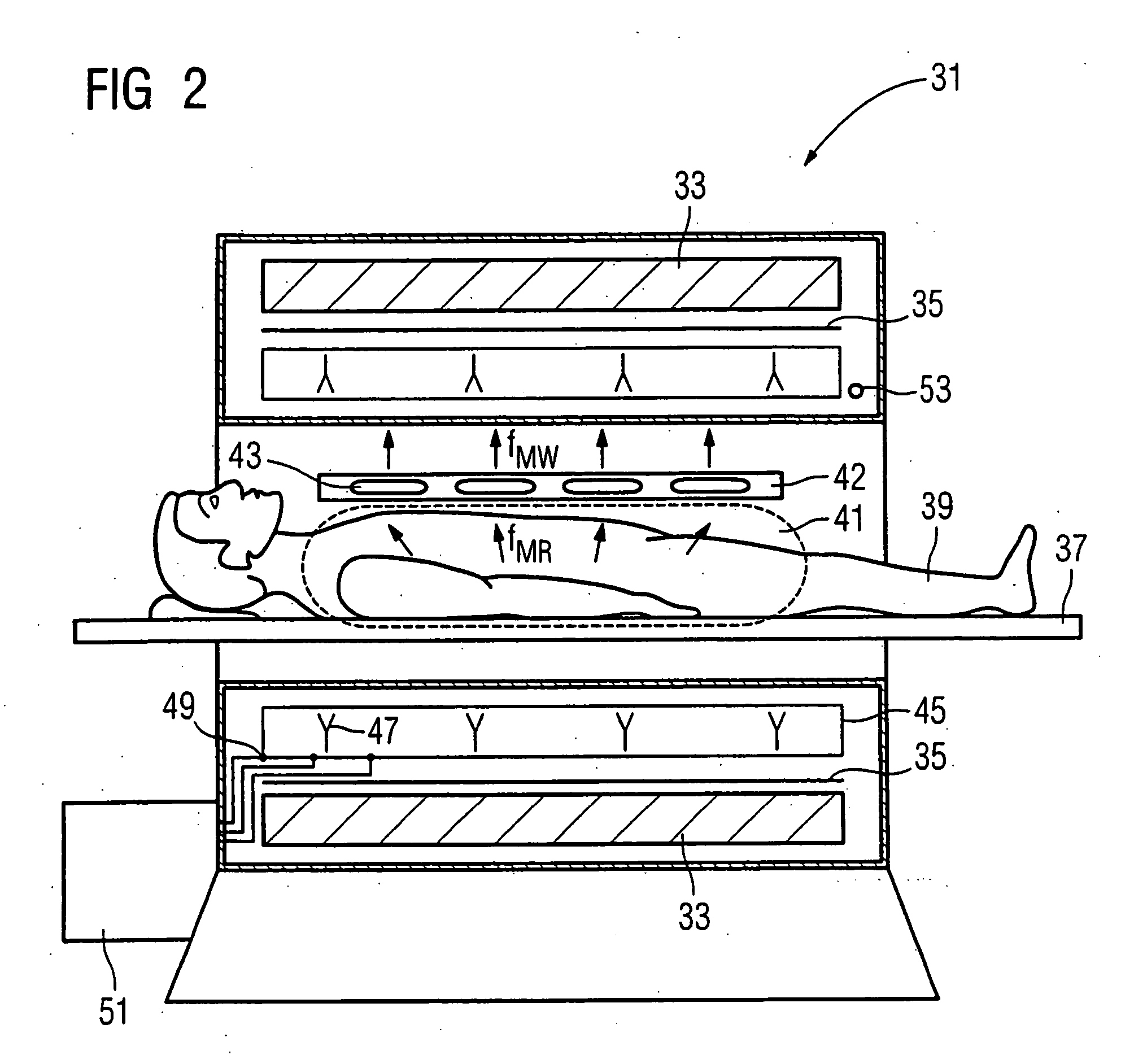Method, examination apparatus and antenna array for magnetic resonance data acquisition
- Summary
- Abstract
- Description
- Claims
- Application Information
AI Technical Summary
Benefits of technology
Problems solved by technology
Method used
Image
Examples
Embodiment Construction
[0033] In an exemplary flowchart, FIG. 1 illustrates an embodiment of the method for implementation of an MR examination with an MR apparatus in accordance with the invention. In step 1, a patient is prepared for MR examination, meaning that the patient is positioned on a patient bed of the MR apparatus and an array 3 of frequency conversion units 5A, 5B, 5C, . . . to be used is arranged corresponding to a region of the patient to be examined. The frequency conversion units 5A, . . . serve for the acquisition of spatially resolved MR signals. If the preparation is concluded, the patient is inserted into the examination region of the MR apparatus, meaning the region to be examined is positioned in the isocenter of the basic magnetic field for the MR examination. The RF excitation 7 that excites the MR signals in the examination region now ensues. For the acquisition steps 9A, 9B, 9C . . . of the MR signals, the frequency conversion units 5A, . . . are, for example, arranged in a lami...
PUM
 Login to View More
Login to View More Abstract
Description
Claims
Application Information
 Login to View More
Login to View More - R&D
- Intellectual Property
- Life Sciences
- Materials
- Tech Scout
- Unparalleled Data Quality
- Higher Quality Content
- 60% Fewer Hallucinations
Browse by: Latest US Patents, China's latest patents, Technical Efficacy Thesaurus, Application Domain, Technology Topic, Popular Technical Reports.
© 2025 PatSnap. All rights reserved.Legal|Privacy policy|Modern Slavery Act Transparency Statement|Sitemap|About US| Contact US: help@patsnap.com



